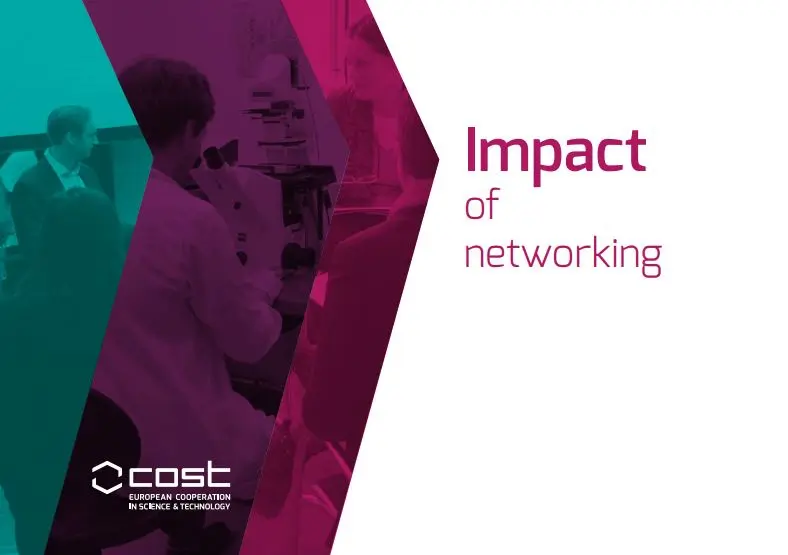
Targeted impact assessment on career development
Florian KNECHT; Manfred SPIESBERGER; Silvia CARRIERI
The Impact Assessment Study commissioned by the COST Association to ERDYN and ZSI in January 2019 aimed to evaluate whether participation in COST Actions has positively impacted the careers of researchers and innovators.

Impact of networking
Did you know that many COST Actions result in societal and scientific impact? Find out more about it in this publication!

Annual report 2018
Discover the impact of our networks and much more in the COST report of 2018.

Annual report 2017
Building bridges of excellence for young researchers is the title of the 2017 COST annual report. This report puts particular focus on the COST Programme as a springboard for young researchers.

Annual report 2014
The 2014 report focuses on storytelling by looking back on an exceptional and challenging year, providing a round-up of the essential steps taken by COST in developing a modern networking concept welcoming all innovative ideas across any S&T field.

Volume 58, Issue 2 Supplement, November 2019
Author Christine Morand et al
Publisher Springer Link
ISSN 1436-6207
In this journal released by Springer, the main findings of the COST Positive Network are explored in 5 articles centered around ‘Interindividual Variation in Response to Consumption of Plant Food Bioactives and Determinants Involved’.



